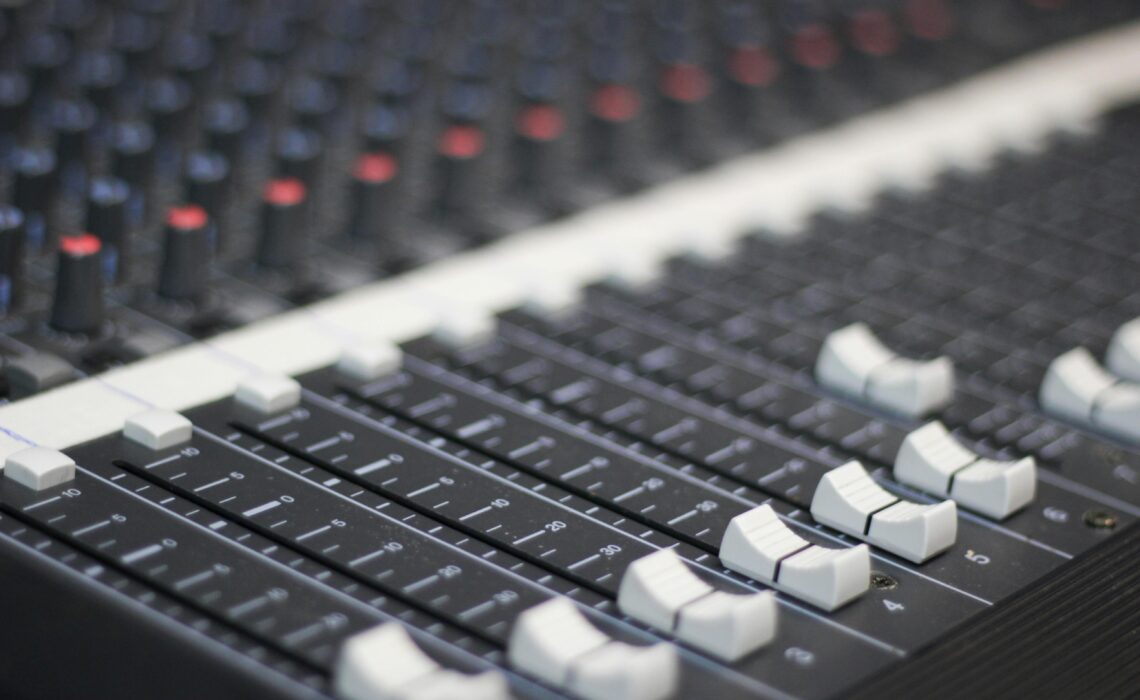
Hi there, fellow Roadie fans! Welcome to our how-to on cleaning up your audio for the best results. Here, you’ll learn everything you need to know about creating audio that’s fuzz-free and a pleasure to listen to.
There’s no denying that harsh background noise can ruin the music-listening experience. Not only does it cause problems for the production team that handles your audio before release, but it also hampers the overall quality of a track, making it harder to market to listeners and generally more difficult to work with.
Fortunately, noisy audio doesn’t have to be a part of your next music project.
There are loads of techniques you can use to clean up the distracting sounds of background noise and create a purer, more distilled sound quality that makes your music more professional and attractive to the world.
But when it comes to noise-mitigation techniques for music and audio files, some are more effective than others. Knowing which ones to use under which circumstances can help you become a more skilled music producer who understands the nuances of sound quality and listenability.
Below, we’ll run through a few different types of background noise before jumping into a list of five powerful and effective techniques for smoothing out sonic messes.
With these tips, anyone can produce clearer, more professional-sounding music.
Different Types Of Background Noise
- Narrowband noise – narrowband noise refers to a small range of frequencies. The crackling, humming sound it creates is often caused by poor electrical connections.
- Broadband noise – occurring over a wide range of different frequencies, broadband noise is characterized by a buzzing, hissing sound that is often referred to as simply background noise.
- Irregular noise – irregular noise is any kind of noise that doesn’t fit into the above noise categories. Weather, traffic, and distant talking are the most common types of irregular noise.
- Impulse noise – any sharp pops or clicks you hear on an audio file are likely to be categorized as impulse noise. This kind of noise typically happens when a vocalist’s mic is not fitted with filters.
5 Techniques For Cleaning Up Noisy Audio That Every Audiophile Should Know
Knowing how to manage and remove noise from your recorded tracks (and your downloaded ones) is crucial for anyone who is serious about making industry-standard music.
Many sound-mixing software programs include built-in noise-gating effects, but knowing both practical and digital hacks for reducing unwanted noise can give you a broader knowledge of editing techniques.
1. Use pop filters to exclude plosives from entering the mix
Plosives are one of the biggest culprits behind noisy audio. Recording technology can translate the sharp pronunciation of certain consonants, such as “P,” very harshly, leading to distractingly loud noises during vocalizations.
If you’re a recording artist or work with one, using a manual pop filter on your mic is one of the simplest yet most powerful ways to prevent noisy audio from occurring. These filters protect the mic from capturing the popping-candy sound produced by certain words.
Another manual way to diminish the amount of noise captured during a recording is to check the connection of your electrical equipment and always record in the quietest spot you can find.
2. Use Mac OSX or Windows to soften the edges
Before you go straight to your favorite music editing software program, you can get rid of a fair chunk of background noise by going through your computer’s operating system first. This can help clean things up and trim off unwanted noise before fine-tuning it on a more sophisticated program.
If you’re using Mac OS X, go to Sound and then select System Preferences. From there, you can tweak the noise input level from a recording.
If you’re using a Windows system, go to the Hardware and Sound section of your sound settings, select Enhancements, and adjust the noise suppression from there. It’s that easy!
3. Use a noise-gating audio effect
When it comes to post-production mixing and mastering, a noise-gating audio effect is your best friend. Able to identify and block out external sounds and sound textures, noise-gating effects can transform even the most crackling of sound recordings into smoother, clearer versions of themselves.
Part of what’s great about an audio effect like this is that you can access it from pretty much any music editing software program. They’re very popular and easy to obtain, making them a crucial element of any music producer’s noise-mitigating arsenal.
4. Educate yourself on different noise-gating effects
Wanting to use a noise-gating effect is one thing, but if you want to know how to clean up noisy audio in an effective way, you may need to educate yourself a bit further.
There are plenty of online music production courses and tutorials that can help, or you can learn by trial and error—although this can be very time-consuming. Whatever route you follow, you need to become well familiar with what noise-gating effects are and how they work, such as:
- Spectral frequency display
- Adaptive noise reduction
- Remove echo
- Frequency analysis
All of these noise-gating effects focus on different aspects of noise reduction, allowing producers to tackle their problems from different angles. Many of these effects also have visual counterparts, enabling sound editors to interpret noise in more than one way.
5. Use the right sound editing program
You aren’t the first to seek help cleaning up noisy audio files, and you certainly won’t be the last. Fortunately, that means tons of sound editing platforms are available that can be used to professionally clean up messy audio recordings and access a wide range of noise-gating tools.
Some of the best sound editing programs are Adobe Audition, Ableton Live, Logic ProX, and WavePad Audio Editor. However, there are near endless options to explore—find one that suits your needs, skill level, and budget for the best results.
Get The Cleanest, Crispest Results
Being a good music producer or recording artist means making sure that every component of your track is mixed to perfection. Sound quality is finicky and can be difficult to master. However, once you understand the fundamentals, producing beautiful, clean music can start to feel like second nature.
By learning and embracing these powerful techniques for cleaning up noisy audio, you can push your music career to the next level and create great tracks that meet current industry standards.


